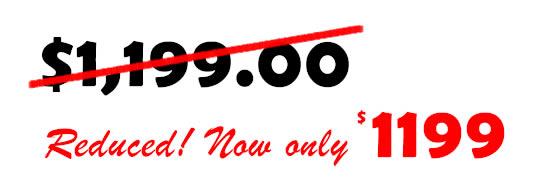An Easy Way to Make Your Prices Seem Lower

Does the way you write a price make it seem higher or lower? Of course! We already know that including a currency symbol can have a negative effect – that’s why you see some restaurants pricing a steak at “29” instead of “$29” (see Neuro-Menus and Restaurant Psychology). But new research shows that punctuation and decimals can make a difference in how people perceive prices.
According to a new study published in the Journal of Consumer Psychology, prices that have more syllables when spoken actually seem higher to consumers. Commas (e.g., “$1,699”) and cents after the decimal (e.g., “1699.00”) add to the number of syllables and hence make the price seem to be of higher magnitude. This effect occurs even when the price is written and not spoken – our brains, they say, use the auditory representation in storing the magnitude of the price even when the price is only seen visually.
The effect is due to the way one would express the number verbally: “One thousand six hundred ninety nine,” for the comma version, vs. “sixteen ninety nine” for the unpunctuated version. Visual length may also be a factor.
Proper Pricing Protocol
At at time when entire businesses are based on a consumer perception of value and low prices, these findings point the way to best price display practices. If you want your customers to look at your price as low, then omit commas and decimals. Don’t use $1,199.00, just say $1199. (You might even omit or minimize the currency symbol, which separate research has shown to trigger selfish behavior.)
Are Sevens Evil?
The experimenters didn’t address this question directly, but if you buy the syllabic count concept then “7” is a price to be avoided when possible. It’s the only number with two syllables, not counting “0” which is spoken as “oh” at least as often as “zero.” Similarly, “70” has three syllables vs. two for the other digits in the tens position. Combine them, and you find that “77” has five syllables compared to just three for “88.”
Syllable Surgery
Don’t forget that many other factors affect price perception – just because it has fewer syllables, don’t expect an $88 item to outsell the same item at $77. Still, when you are setting up display prices in print, web, or TV ads, read the price aloud. Eliminate unnecessary elements like commas and decimals. And, if you can knock off a syllable or two without affecting your margin in a significant way, do it. And, if the price is being spoken (by a radio or TV announcer, for example), be sure that the script specifies exactly how the number should be read – you don’t want your syllable surgery to be negated by a longer spoken price!
